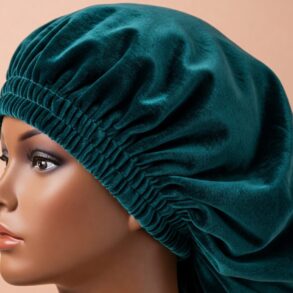For many Black women, hair is an extension of who they are.
Tammy Townsend is no exception. Every chance she gets she dyes her short salt and pepper hair. The transformation brings out her inner confidence. That’s the feeling she wants to leave with her clients when she does their hair.
“It is really a big deal,” Townsend said. “They want to show it off and say who did their hair, and it adds some excitement to the day.”
Townsend is incarcerated at the St. Louis County Justice Center. She’s one of four women participating in the jail’s new St. Louis County Jail Barber and Beauty Shop program. It’s the first of its kind in the state to offer a beauty and barber shop training program for incarcerated women in county jail. Townsend said the program was an opportunity for her to learn new skills.
“It kind of opened the door for something different,” Townsend said. “I’m kind of on a journey here and I want God to order my steps and to guide me into the next phase of my life.”





Eric Lee
/
St. Louis Public Radio
The goal is to reduce the recidivism rate by providing the women with skills they can use once they are released.
The nine week course is a condensed version of traditional cosmetology and barbering curriculum found in beauty schools across the country. The first half focuses on hair theory. The latter half is full of hands-on experience. At the end, they’ll receive a certificate of completion.
Each participant gets their own kit filled with essential hair tools including curling irons, flat irons, a blow dryer, combs, a mirror and clippers. The hair service starts with a consultation. A style is decided based on the clients face shape, hair length, and the stylists abilities. Once a neck strip and black cape are put on, the women get to work.
Nichole Zeable was Townsend’s first client of the day. She transformed Zeable’s long straight hair into layered curls for an upcoming visit with her family. Zeable said the experience has lifted her spirits.
“It helps overall self and inner beauty,” Zeable said. [It] helps build confidence. As far as feeling good on the inside and looking good on the outside. It’s a great confidence boost, which is sometimes hard to find in here. It’s lonely in here.”




Eric Lee
/
St. Louis Public Radio
Tyresha Jordan, another participant in the program, said this is an opportunity to give back while challenging herself with a skill she only did from time to time. When she’s released, she wants to take what she learned and pursue a barbering license.
“Once I got here, my heart got in it,” Jordan said. “So, now I’m just like alright this is something I can actually be passionate about. I’m not going to get tired next week. Some people go to jobs saying, ‘this [is] just not it. I don’t want to do this.’ This is something I can see myself doing. Like waking up everyday happy going to work.”
Evon Edmonds-Childs agrees. She comes from a long line of cosmetologists from her mother to her grandmother. Edmonds-Childs has tried her hand at getting a license with 800 hours under her belt. That’s 700 hours short of the requirement.
“I kind of strayed away from it,” Edmonds-Childs said. “I was like, no, that’s what they want me to do. They’re trying to teach me this and all along it was in me.”
She plans to get the rest of her hours once she’s released.




Eric Lee
/
St. Louis Public Radio
Gifted Hands
The program is co-lead by independent contract barber Rachel Pulliam and hairstylist Clarice Booze. Both have been in the industry for more than 20 years. Pulliam spends her time teaching the tricks of the trade to the women in the program. On this particular day, she walked Tyresha Jordan through her first haircut with a client. That moment solidified Jordan’s plans to become a barber.
Pulliam said this experience is more than just picking up new skills. It’s given her a way to give back by showing these women there is a different path they can take once they leave.
“If nobody else showed them that they cared, that we, me and my teammate came in and showed them that, ‘hey, we care. You can do it. This is not your final destination,’” Pulliam said.
Booze felt the same.
“I’m trying to hide my emotions because we’re not supposed to connect, but it’s very hard not to connect when you have such a passion for what you do and what you love,” Booze said. “We know that this group being our first group is gonna always be memorable.”




Eric Lee
/
St. Louis Public Radio
A Renewed Purpose
The course stems from a popular barber shop program for incarcerated men at the county jail held last spring. Janel Lewis is an administrative assistant at the justice center and creator behind the program. She said county and jail officials were eager to expand her idea to the incarcerated women at the jail.
“They’re really on board with the reform process of this,” Lewis said. “I feel like I was not expecting this outcome when I first pitched [the program].”
The program has received major support from jail and county officials including St. Louis County Executive Sam Page.
In a statement, Page said the county is committed to rehabilitation and “by equipping these women and men with valuable skills, we’re not just transforming their lives behind bars but also offering them a pathway to success once they leave our care.”
The St. Louis County Jail Barber and Beauty Shop program has been popular amongst both the incarcerated men and women at the county’s justice center. She said there’s even a waiting list for more people to participate and it grows by the day. That goes for the instructors who also want to lend their time.
“This program definitely opened that door for them and a lot of, both beauticians and barbers actually told them, ‘hey, if you get out and you want to pursue this, come to us. Come to our shop. We know people. We can help you,’” Lewis said.




Eric Lee
/
St. Louis Public Radio
Programs like this in jail are important to help knock down recidivism, said Beth Huebner, a professor of criminology at Arizona State University. She said oftentimes there are fewer opportunities from rehabilitation in jail than in prison.
“People have a lot of idle time in jail,” Huebner said. This gives them an opportunity to learn a new skill or even just connections with other people so they can take those skills outside of jail.”
While this program is a step in the right direction, it doesn’t mean everything will be smooth sailing. A criminal record can be a barrier to getting a barber or cosmetology license. However, Huebner said that the mentorship and connections established in this program will make it easier.
“They can help connect them with somebody at this job or with this job,” said Huebner. “The only challenge here is that many big companies [will ] have very formal policies about a criminal record. But what we do find is smaller companies, local companies that’s where people can get their foot in the door and have that mentor be like, ‘hey, I know this person. I can vouch for them.’”
At the end of Nichole Zeable’s appointment, she had three words. “I feel beautiful.”
Lewis said humanizing incarcerated women is an important part of this process.
This post was originally published on this site be sure to check out more of their content.








